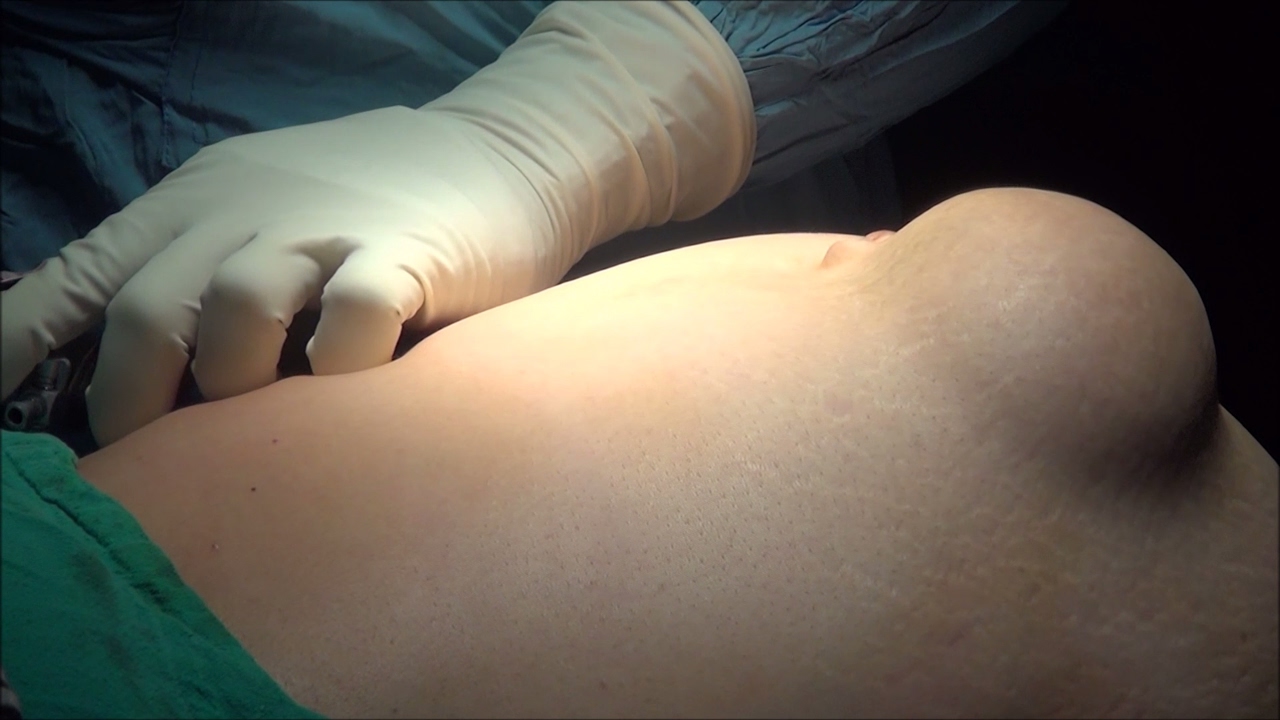Incisional hernia (IH) is a common complication after abdominal surgery. After a laparotomy – opening the abdomen in an operating room – the chances of developing this type of hernia in the first year are 5 to 15%. This percentage is biased, since 35% of them are diagnosed up to 5 years after the operation. On the other hand, the repair of an incisional hernia is not always satisfactory, since up to 44% reappear. If you want to know everything about this complex clinical entity, read on.
What is an incisional hernia?
An incisional hernia occurs when surgery causes a weakness in the muscles of the abdomen that allows tissues to pass through the muscle. The hernia appears as a bulge under the abdominal skin and may be painful and tender to the touch.
Incisional hernia surgical incision compromises the integrity of the abdominal muscles. It weakens them and allows abdominal tissues and organs to cross the abdominal wall. Incisional hernias can occur a few months or years after surgery.
An incisional hernia is usually small enough for only the peritoneum (membrane covering the inner surface of the abdomen) to pass through. In severe cases, portions of organs may protrude through the hole in the muscle, but this is much less common.
A hernia is defined as the protrusion of any organ outside the cavity in which it is normally housed. In this case, the incisional form is an abnormal protrusion of the peritoneum – membrane that covers the inner wall of the abdomen – through the pathological scar of a surgical or traumatic wound.
As we have said, up to 15% of patients who have undergone abdominal surgery will develop IH. 50% of these problems are diagnosed during the first year after the operation, while another 35% can be detected up to 5 years later, according to studies.
In some surgical clinics, up to 8% of patients on the waiting list present with symptoms of an incisional hernia. These data show that it is a much more common and annoying medical problem than it initially seems.
Is it possible to prevent an incisional hernia?
According to what we have seen, the only 100% effective way to prevent this problem is by not undergoing unnecessary surgeries in the abdominal region. But, when these procedures are necessary for the patient’s health and well-being, it is recommended to avoid risk factors that may contribute to the appearance of an eventration after the surgical procedure.
In this sense, some guidelines that you should pay attention to are: prevent overweight, stop smoking and respect all the indications of your doctor during the rehabilitation of the surgery, to ensure optimal healing of the abdominal region.
Types of incisional hernias
There are many types of HI, depending on the qualifying criteria you want to follow. The Cuban Journal of Surgery shows us the most important:
- According to its etiology or underlying cause: an incisional hernia can be post-laparotomy, post-traumatic, trocar, tacker and other synonyms.
- Based on its evolution time: it can be a recent or old HI. As we have said, up to a third of them are diagnosed 5 years later.
- According to its location: There are many types of IH based on where they appear. They can be in the groin, upper stomach, belly button, at the site of a surgical scar, and several other places.
- Based on the diameter and the hernial ring: an HI is small if its diameter is less than 5 centimeters. Is considered monstrous (according to the clinical term) if the diameter exceeds 20 centimeters.
There are many more classification criteria to classify an incisional hernia, but with these examples its physiological complexity is more than clear. In addition, depending on the location and size, they may or may not alter the rhythm of the gastrointestinal tract, which leads to very diverse symptoms.
What are the symptoms?
The portal Drugs shows us some of the typical symptoms of an incisional hernia. Among them we find the following:
- Abdominal pain, which varies depending on where the hernia occurs.
- Nausea and vomiting.
- Swelling or soft lump, especially located in the place of a previous abdominal incision.
- Abdominal distension generalized.
Without a doubt, the clearest symptom of IH is a kind of lump or protrusion in the place where a surgical intervention has been performed before. Although it can appear anywhere, it is more likely to occur in incisions that are located in the area of the sternum to the pubis.
Possible complications
Older age, being obese, generalized malnutrition, a previous infection in the incision area, smoking, and certain medications can worsen the clinical picture of an incisional hernia.
As unpleasant as it may sound, there are isolated cases where an IH is so large and obvious that it can cause an epidermal tear and the exit of the intestine by the incision site.
What Causes an Incisional Hernia?
As we said, In most cases, incisional hernias appear from previous laparotomies. These types of wounds behave worse than others on a clinical level. In the first place, as studies indicate, they are lesions that do not remain at rest after surgery, since respiratory movements do not allow total healing.
Abdominal movements and other problems make healing from a laparotomy difficult, so the sutured line will never present the strength that characterized it before the operation. After 1-2 months of the intervention, it is estimated that the tissue can reach 50% of its viability.
The presence of this weak tissue promotes the protrusion of the peritoneum, or what is the same, the appearance of an incisional hernia.
How is it diagnosed?
In many cases, the incisional hernia is reducible. This means that the patient can notice it only when performing activities that cause clear abdominal pressuresuch as coughing, sneezing, exercising, or lifting a heavy object.
However, if the incisional hernia is visible to the medical professional’s eye, no further tests are usually necessary, other than routine palpation. In the cases that raise doubts, you can go to computed tomography scans.
Treatment of an incisional hernia
There are several fronts to approach an HI. Among all the possible ones we find the following:
- Medicines: Non-steroidal anti-inflammatory drugs (NSAIDs), such as ibuprofen, help reduce pain, inflammation, and possible secondary low-grade fever. Anyway, you should ask your doctor if these drugs are for you.
- Hernia reduction: hernias are pushed directly without the need for surgery. Certain medications that cause muscle strain, making pushing easier, may be necessary.
- Surgery: Due to its complexity, we dedicate our own lines to it in the following section.
Incisional hernia surgery
As indicated by the Memorial Sloan Kettering Cancer CenterIn many cases the only solution to repair IH is to undergo surgery. Depending on the diameter of the hernia and the condition of the patient, you can go to a laparoscopy or open surgery.
In laparoscopic surgery, the surgeon will make a series of strategic cuts in the abdomen and will swell the cavities of the patient to observe the organs well. Using a thin scope with light and instruments, the professional will proceed to close the hernia and return all the structures to their place.
In open surgery, as the name suggests, A large incision is made in the abdomen to repair the hernia. The surgeon may choose to place an abdominal patch as a support (mesh) to prevent re-protrusion. Over time, this patch is reabsorbed into the patient’s tissue.
The results of these interventions are not always satisfactory. Recurrence rates for incisional hernias after repair range from 31% to 44%.

Tips and Recommendations
As you can imagine, only a professional can fix an incisional hernia, but this does not mean that certain precautions cannot be taken from home to prevent it from getting worse.
In conclusion, we present some of the things you can do on a day-to-day basis if you have an HI:
- Maintain a healthy weight: being overweight increases the pressure in the abdominal cavities and, therefore, favors the ejection of the hernia to the outside. It is necessary to consult with the doctor if the patient should undergo diets once he has received the diagnosis.
- Don’t strain in the bathroom: intestinal efforts can cause the symptoms of the hernia to worsen. Drinking lots of water and a high fiber diet can help you a lot.
- Do not smoke: Smoking promotes the appearance of coughs and sputum, among many other negative things. The more you cough, the more your chest will hurt and the hernia will eject.
- Return to your normal activities when your doctor tells you to: it is necessary to maintain prolonged rest.
You may be interested: What is a rectal prolapse and what are its causes?
Incisional hernias are complications of other disorders
An incisional hernia is a common clinical event in people who have undergone abdominal surgery.. Although it is not an extremely worrying clinical entity, getting rid of it can be a complicated task, since the affected tissue does not usually respond well to repair processes.
If you have an incisional hernia, it is best to put yourself in the hands of professionals and be patient. Various medications and lifestyle changes can greatly improve your symptoms, so don’t despair.
